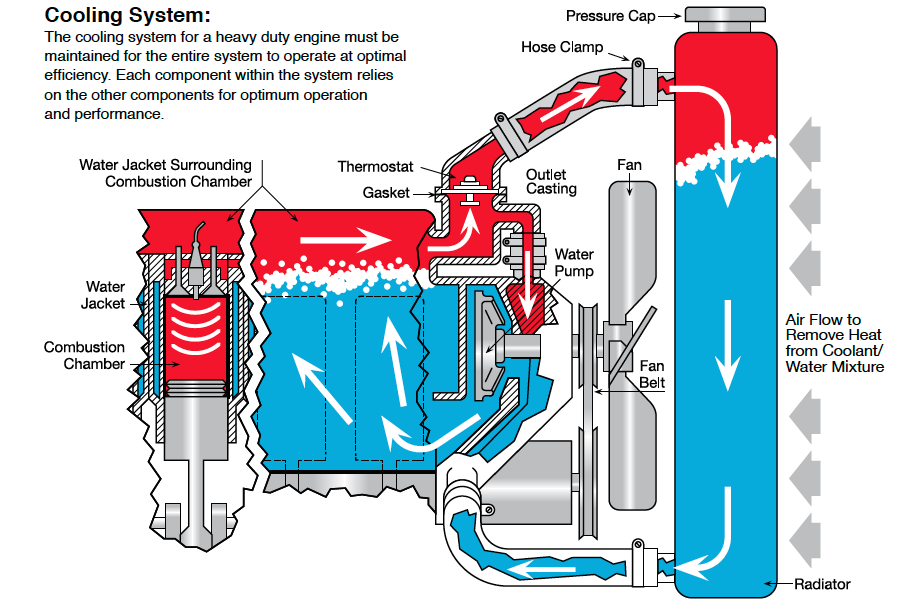Menu

The Latest Insights
Ten Things You Need To Know About Your Trucks’ Coolant
Article published with the permission of Chevron
Dec 3, 2020 10:00:00 AM
Coolant experts in the industry were surveyed about the most important things fleets should know when it comes to their coolant. Below is a brief guide to your trucks’ coolant, in the form of 10 of their most important coolant tips.


- There are quite a few different types of coolant, including Conventional Fully Formulated, Hybrid and/or Organic Acid Technology, Extended Life coolants and those with and without nitrite. You’ll want to familiarise yourself with these and know what your trucks use.
- That being said; do not mix these different types of coolant in the same truck. The problem with topping off a fully formulated cooling system with extended life coolant is you’re diluting the additive technologies in both products, and in this case they don’t work together to fight corrosion. As you add more extended life coolant, you’re diluting the amount of additive you have from the fully formulated conventional coolant. Mixing the two coolants will result in insufficient additive from either to protect the engine, which could result in engine failure.
- A recommendation is to select a pre-mixed solution to ensure that the concentration is correct and consistent.
Download the Delo® XLC Antifreeze/Coolant Brochure
- You should find out whether the coolant supplier has certified if the product offered is made from virgin or recycled materials and complies with minimum requirements for heavy-duty coolant.
- If you’re buying bulk (unpackaged) coolant, be sure to include specific instructions regarding coolant quality during transit and delivery. Be clear about your requirements for cleanliness, verification of product type, and so on.
- You also need to find out whether you need nitrited or nitrite-free coolant, and whether you need to condition any new radiators.
- Consider as well whether your fleet wants all of its coolants to be consolidated and/or replaced; in other words, do you want all of your trucks to use the same coolant? If so, you’ll need to follow the right procedures.
- If you’re looking at switching coolant brands or types, it is recommended that you ask the question: what am I trying to achieve with my coolant change? Coolant is often taken for granted and the financial return on investment for it is overlooked. Coolant is designed to do one thing: keep the temperature of the engine at an optimal temperature so the engine is the most fuel efficient and produces the least amount of emissions. To perform in this manner, the coolant must do two things well: (1) transfer heat from the engine and (2) keep the cooling system clean by preventing and eliminating future corrosion for the life of the coolant so it works as it is designed.
- Switching from one type of coolant to another is not easy. Engine oils, for instance, are usually drained and then refilled with a new oil; but this rarely, if ever, happens with coolant, as it’s both costly and difficult to do so. So if you do want to switch your fleet over to a different type of coolant, you need to be sure to follow the appropriate steps.
- Article published with the permission of Chevron



